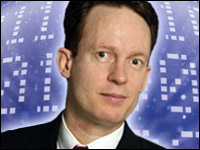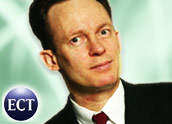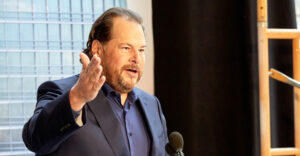
An American’s first impressions of India often include images of alternate approaches to trash management, intermittent electrical power supplies and issues of environmental sustainability.
In this interview with Trudy Heller, those approaches are seen from the perspective of Heller’s work designing products for environmental sustainability and providing training to executives in environmental management.
Heller is the president of Executive Education for the Environment, based in Swarthmore, Pa. She recently visited India to assist in setting up an environmental management training program at the new Indian Institute of Management in Shillong, the capital of the state of Meghalaya, Northeast India.
E-Commerce Times: What about your recent trip to India stays in your heart the most?
Trudy Heller:
In Shillong, I would leave the guest house each morning and walk out into a scene from a sustainable economy. In the driveway and walkways, four or five women were employed sweeping up debris that had fallen from the trees during the previous night’s rain. Each woman worked with a biodegradable sweeper made of broom grass, a locally grown agricultural product.
This tableau of a sustainable economy was striking to my Western senses. The system provided employment, used biodegradable, locally sourced products, and produced an excellent result — cleared walkways and driveways — without noise or air pollution disturbing the academic community.
At home in the United States, the problem of removing debris from driveways and walkways would be managed with an entirely different solution. A single worker equipped with a gasoline-powered tool would be hired to blow the debris off the pavement.
This solution would disturb the community with noise and air pollution, burn fossil fuel, emit carbon dioxide — a greenhouse gas — and provide employment for a single individual. With sustainability as the standard, it is easy to see which is the more “advanced” solution.
ECT: How are you using the word, “sustainability”?
Heller:
In his new book, Sustainability by Design, John Ehrenfeld suggests a definition for sustainability as “the possibility that humans and other life will flourish on Earth forever.” Sustainability is, by this definition, a vision and a mindset. In my trip to India, sustainability became a standard against which I measured practices that were new to me.
Rather than seeing the West as the standard of environmentally sustainable practices and India as an emerging economy that is trying to catch up, I saw opportunities for both East and West to learn from each other.
ECT: What were your observations of Indian senior managers regarding your environmental stewardship standard?
Heller:
I met power company executives who were building hydropower stations at the same time that India’s Prime Minister Manmohan Singh was in Washington, D.C., negotiating an agreement for nuclear power. India needs electricity to support its information technology industry and to meet basic needs. Both hydro and nuclear technologies go directly to clean power that does not emit greenhouse gases and contribute to climate change.
These technologies avoid the traditional path of polluting first and cleaning up later, which has been the path followed in the United States and Europe. Compare this with China’s construction of a coal-fired power plant each week to 10 days, and it is easy to see which is the more “advanced” solution when environmental sustainability is the standard.
ECT: Did the executives see their companies in terms of the same sustainability standard that you talk about?
Heller:
Managers, naturally, get engrossed in the daily challenges of running their operations. They struggle with community relations, requirements of government bureaucracies, and materials and personnel management. It is easy to lose sight of the big picture under these pressures.
Managers need to see themselves as global citizens, as being on the right side of history, as contributors to a transformation to a sustainable society.
Understanding how new business models are being created, hearing about examples of new product designs that dematerialize — or use less stuff, of companies that are profiting by using business models enabled by information, and communications [technologies] that substitute services for products was inspiring and enlightening to them.
For example, a power company executive recounted the travails of his efforts to deal with local community resistance to his company’s plan to build a new hydropower plant. I challenged him to frame his project in terms of the need to reduce greenhouse gases.
“How many tons of carbon dioxide will you NOT emit, by building a hydropower plant instead of a coal fired plant?” I asked. Or how many tons of carbon would be emitted if a coal fired plant provided the same amount of electricity?
He was thrilled with this question and began to use his engineering skills to do the computation. But he also got the bigger point: India needs power. The choice is to either build thermal plants that will produce electricity AND emit greenhouse gases that contribute to climate change, or to build clean power plants that will not add to the climate’s burden of carbon, to leapfrog over more polluting technologies.
ECT: What other aspects of life in India did you notice with your environmental stewardship approach?
Heller:
Trash. The average American produces four pounds of trash per day. In India, there was no trash can in my room. I would collect trash on a shelf of my desk, and hand it to the woman who came to clean my room.
I became acutely aware of each morsel of trash I created. There was no “away.” I could not just drop trash in a can and put it out of my mind.
This system was simplified by the absence of paper products that are abundant in the United States: paper cups, plastic lids, straws, tissues, paper plates, plastic spoons and forks, all manner of handouts and advertising fliers, brochures, schedules, announcements.
Instead, “real” plates and cups were washed and reused even when they were taken out of the dining hall and brought to me at the guest house. E-mail worked just fine, a single copy of a newspaper was shared, and communication was often person-to-person. Measured against a sustainability standard, it is easy to see which system is more advanced.
Adding to the mindfulness of trash creation was the sight of a plume of smoke spotted on one of my walks around the Indian Institute of Management’s Shillong campus. The sight and smell of burning trash increased my attempts to minimize waste. Like the principle of “extended producer responsibility,” witnessing the processing of the end of life of my trash kept the pressure on to use washable dishes and utensils, to minimize paper use, and to use other products long and well.
What became valuable were things that could be used intensely and that would endure a long time. Single or short use products that had to be tossed out and replaced became an anathema. I felt my environmental footprint shrinking.
Another experience with trash occurred when I arrived in India and realized that I had left two folders full of important papers on the airplane. I went to the British Airways lost luggage desk and waded into the crowd of people with lost luggage.
The airline clerk made a phone call but reported that the crew had not found the missing folders. I left my name and hotel address but wasn’t expecting to see those papers again. I gradually realized that most of what was in the folders was also in my laptop computer — voila, paperless!
ECT: What are your concluding thoughts about what the heads of Indian companies need to know about environmental sustainability?
Heller:
Indian managers need to see themselves as leaders of the global green economy. We in the West have a lot to learn from them. With economies around the world in recession, falling consumption in the so-called consumer economies, and an urgent need to delink economic development from environmental degradation, we need the wisdom of both Eastern and Western ways of managing.
I find hope in management approaches and consultancies that base their practice in Indian culture’s inclinations toward sustainable development. AllIndiaLive.org is one example.






































































Social Media
See all Social Media